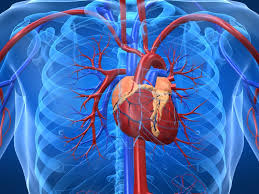
Diagnosed with Cancer? Your two greatest challenges are understanding cancer and understanding possible side effects from chemo and radiation. Knowledge is Power!
Learn about conventional, complementary, and integrative therapies.
Dealing with treatment side effects? Learn about evidence-based therapies to alleviate your symptoms.
Click the orange button to the right to learn more.
- You are here:
- Home »
- Blog »
- side effects ID and prevention »
- Chemotherapy-induced Cardiomyopathy
Chemotherapy-induced Cardiomyopathy

The past five echocardiograms indicate that I am healing my chemotherapy-induced Cardiomyopathy. I am doing this with evidence-based, non-toxic, non-conventional therapies such as nutrition, supplementation, and lifestyle therapies such as daily exercise and whole body hyperthermia.
My diagnosis of multiple myeloma in early ’94 led to induction chemotherapy, stem cell mobilization and an autologous stem cell transplant all in 1995. Fifteen years later, in late 2010, I developed atrial fibrillation (Afib) and I was diagnosed with Chemotherapy-induced cardiomyopathy-(CIC).
The damage (CIC) done to my heart should come as no surprise once you study the short, long-term and late stage side effects caused by the cardiotoxic chemotherapies prescribed for my treatments, listed below.
CIC diagnosed 15 years after active therapy is my definition of a late stage side effect.
This blog post will focus on CIC specifically however I have to manage a host of heart problems all related to the cardiotoxic chemotherapies that I underwent listed below.
- Vincristine
- Doxorubicin
- Cytoxan/cyclophosphomide
- Busulphan
- Melphalan
Since I developed CIC, Afib, etc. in late 2010, I have come to focus on specific heart-health issues- specifically an aortic aneurysm, enlarged aortic root, weakened left ventricle and enlarged left atrium. While I it is clear that cardio-toxic chemotherapy did serious damage my heart, I have to wonder is Marfan’s Syndrome, a condition that runs in my family, may also be a contributing factor.
When I was first diagnosed with CIC in late 2010, I too was prescribed a standard-of-care therapy-metoprolol. After only a day or two on the medication I felt awful (fatigue, shortness of breath) and I chose to discontinue taking this drug. I chose to pursue evidence-based, non-toxic, non-conventional therapies. The dozen or so blog posts linked below document years of struggling with CIC, Afib, BP, etc.
My issue then, was to manage my heart health as well as my CIC, Afib, blood clot, ejection fraction (EF), Aortic aneurysm, etc. and live a normal quality-of-life (QOL) without toxic medications.
It took a few years to figure out what I was doing but the results of five echocardiograms over six years- 2015-2021, as of my echocardiogram in June of 2021- are listed below.
Consider:
- CoQ10
- DHEA
- Omega-3 fatty acids
- Curcumin
- Vitamin D3
- Cocoa
- Carnitine
- D-Ribose
several other supplements.
In short, all metrics of my CIC is/are stable or have improved since my diagnosis of CIC in 12/2010.
When T.V. commercials say “when diet and exercise aren’t enough” they are enough in my case. I am NOT saying that all use of toxic heart, BP, etc. meds are bad. I am saying that conventional therapies often have more short, long-term and late stage side effects than your M. D. will tell you about and I am saying that evidence-based, non-toxic heart therapies should be pursued first.
You must understand ALL of the pros and cons, the risks and rewards to any therapy. And if you can’t control something, then by-all-means, use a conventional therapy.
Blog Posting about Chemotherapy-Induced Cardiomyopathy-
I’ve spent years researching and writing about chemotherapy-induced cardiomyopathy for years- the good, bad and the ugly.
- CardioProtective Therapies…
- Cardiac Rehabilitation-Curcumin, Cardiovascular Disease…
- NAC (N-Acetyl Cysteine)-Heart, Bladder, Chemobrain, Kidney
- Cardiac Resynchronization Therapy for Chemotherapy-Induced Cardiomyopathy
- Cardiac Rehab with Magnesium
- Lower Blood Pressure w/ Evidence-based, Non-toxic Therapies
- Atrial Fibrilation-Catheter Ablation More Popular But Complications Rise
- Evidence to Manage My Heart Disease is “Weak”
- Hospitalized for Heart Failure, Stroke? Reduce Blood Clot (VTE) Risk-
- Chemotherapy-induced Cardiomyopathy (CI-CM)- How long have I got?
- Risk of Sudden Cardiac Death among Atrial Fibrillation Patients (me)
- AYA, Childhood Cancer Survivors’ Future Risk of Heart Disease
- Coenzyme Q10 Is Safe and Effective Cardiomyopathy Therapy
- Coronary Artery Disease- Non-toxic, Non-conventional Therapies
- Chemo-Induced Afib, Hi BP, DVT
- Collagen-Skin, Muscle, Joint, Brain and Heart Health
- CoQ10 to Improve Ejection Fraction in Congestive Heart Failure
- Exercise-Based Cardiac Rehabilitation
- 80% of Pediatric Cancer Survivors Suffer Chemo-Induced Heart, Brain, Joint Damage
If you’ve undergone cardiotoxic chemotherapy regimens, consider evidence-based, non-toxic therapies shown to heal chemotherapy-induced Cardiomyopathy. Scroll down the page to learn more.
- Learn about healing chemotherapy-induced aging- click now
- Learn about my long-term myeloma survivor experience- click now
- Learn about chemotherapy-induced hypertension- click now
- To Learn More about Non-conventional Heart Therapies- click now
- To Learn More about short, long-term and late stage side effects- click now
Thank you,
David Emerson
- MM Survivor
- MM Cancer Coach
- Director PeopleBeatingCancer
Many Guidelines For Heart Care Rely On Weak Evidence
“Doctors turn to professional guidelines to help them identify the latest thinking on appropriate medical treatments, but a study out Friday finds that in the realm of heart disease, most of those guidelines aren’t based on the highest level of evidence…
A paper in JAMA, the journal of the American Medical Association, that was released online ahead of print, finds that less than 10 percent of cardiovascular guidelines are based on the most carefully conducted scientific studies, known as randomized controlled trials. A lot of the rest are based on much weaker evidence…”
Echocardiogram Results from 2015-2021
- BP.
- left ventricle systolic function EF
- left atrium
- right atrium
- Aortic root-
- Ascending Aorta
All have improved-
- 6/2021 BP- 109 /65 mmHg
- 2/2020 BP –109 /65 mmHg
- 10/2018- BP -126 /82 mmHg
- 9/2016- BP –125 /80 mmHg
- 10/2015-BP –114 /69 mmHg
6/2021 Left Ventricle: The left ventricular systolic function is low normal, with an estimated ejection fraction of 50-55%.
2/2020- Left Ventricle: The left ventricular systolic function is low normal, with an estimated ejection fraction of 50-55%.
10/2018- Left Ventricle: The left ventricular systolic function is mildly decreased, ejection fraction of 40-45%.
9/2016- Left Ventricle: The left ventricular systolic function is mildly to moderately decreased, with an estimated ejection fraction of 40-45%.
10/2015-The left ventricular systolic function is mildly decreased, with an estimated ejection fraction of 40-45%.
- 6/2021 Left Atrium: The left atrium is normal in size.
- 6/2021 Right atrium is upper limits of normal in size
- 2/2020- Left Atrium: The left atrium is severely dilated.
- 2/2020- Right Atrium: The right atrium is moderately dilated.
- 10/2018- Left Atrium: The left atrium is severely dilated.
- 10/2018- Right Atrium: The right atrium is mildly dilated
- 9/2016- Left Atrium: The left atrium is moderate to severely dilated.
- 9/2016 – Right Atrium: The right atrium is mildly dilated
- 10/2015- Left Atrium: The left atrium is mildly dilated
- 10/2015 – The right atrium is normal in size.
- 6/2021- Ao Root d: 5.10 cm
- 6/2021- Asc Ao, d: 4.60 cm
——–
- 2/2020- Ao Root-?
- 2/2020-Asc Ao, d: 4.60 cm
——–
- 10/2018- Ao Root: 4.40 cm
- 10/2018-Asc Ao, d: 4.60 cm
——–
- 09/2016- Ao Root- 4.3 cm
- 09/2016 – Asc Ao- 4.9 cm
——————
- 10/2015- Ao Root: 5.30 cm
- 10/2015– Asc Ao- 4.80 cm
2/2020 The aortic root is abnormal. There is moderate dilatation of the ascending aorta. There is severe dilatation of the aortic root.
10/2018- The aortic root is abnormal. There is moderate dilatation of the ascending aorta. There is moderate dilatation the aortic root.
09/2016- The aortic root is abnormal. There is moderate dilatation of the ascending aorta. There is severe dilatation of the aortic root.
10/2015- The aortic root is abnormal. There is moderate dilatation of the ascending aorta. There is severe dilatation of the aortic root. Maximal diameter of aortic root is 5.3 cm

